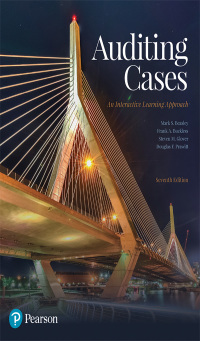One can only imagine the high expectations of investors when the boards of directors of CUC International,
Question:
One can only imagine the high expectations of investors when the boards of directors of CUC International, Inc. (CUC) and HFS, Inc. (HFS) agreed to merge in May 1997 to form Cendant Corporation. The $14 billion stock merger of HFS and CUC, considered a marriage of equals, united two large service organizations. CUC was a direct marketing giant with shopping, travel, automobile, and entertainment clubs serving over 68 million members worldwide while HFS was a franchisor of brand-name chains such as Ramada, Days Inn, Avis, and Century 21, with over 100 million consumers worldwide. The cross-marketing opportunities between CUC and HFS were expected to create synergies that would further increase the revenue and earnings growth of the newly formed entity, Cendant. The senior executives of CUC and HFS noted that the merger would enhance shareholder value by establishing one world-class consumer and business services organization that would compete on a global scale with superior revenue and earnings growth potential (Form 8-K, CUC International, Inc., May 27, 1997).
REQUIRED
[1] Professional auditing standards indicate that an entity’s internal controls consist of five interrelated components.
(a) What responsibility does an auditor have related to each of these five components?
(b) One component of internal control is the entity’s control environment. What factors should an auditor consider when evaluating the control environment?
(c) What red flags were present during the 1995 through 1997 audits of CUC that may have suggested weaknesses in CUC’s control environment?
[2] Professional auditing standards recognize there is a possibility that management may override internal controls.
(a) Provide an example where management override occurred in the Cendant fraud.
(b) What are the required auditor responses to further address the risk of management override of internal controls?
[3] Professional auditing standards outline the auditor’s consideration of material misstatements due to errors and fraud.
(a) What responsibility does an auditor have to detect material misstatements due to errors and fraud?
(b) What two main categories of fraud affect financial reporting?
(c) What types of factors should auditors consider when assessing the likelihood of material misstatements due to fraud?
(d) Which factors existed during the 1995 through 1997 audits of CUC that created an environment conducive for fraud?
[4] Several misstatements were identified as a result of the fraud perpetrated by CUC management.
(a) For each misstatement identified, indicate one management assertion that was violated.
(b) For each misstatement identified, indicate one audit procedure the auditor could have used to detect the misstatement.
[5] Some of the members of CUC’s financial management team were former auditors for Ernst & Young, LLP.
(a) Why would a company want to hire a member of its external audit team?
(b) If the client has hired former auditors, how might this affect the independence of the existing external auditors?
It is recommended that you read the Professional Judgment Introduction found at the beginning of this book prior to responding to the following questions.
[6] What is meant by the term professional judgment, and why is it a particularly important concept to consider in the Cendant case?
[7] What are some examples of judgment traps and tendencies that likely affected the auditor's judgment when auditing CUC's financial statements?
Step by Step Answer:

Auditing Cases An Interactive Learning Approach
ISBN: 9780134421827
7th Edition
Authors: Mark S Beasley, Frank A. Buckless, Steven M. Glover, Douglas F Prawitt





